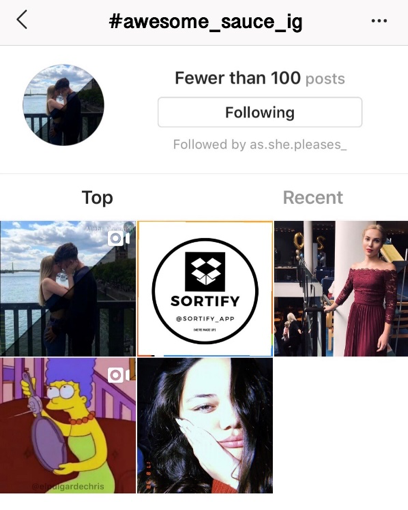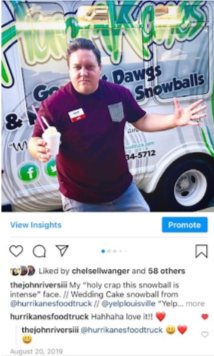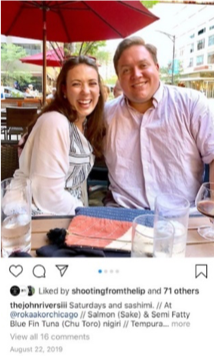What do you think when you stumble upon a social media profile that smells a little fishy? Maybe they have thousands of followers but almost no one engaging with their content. Maybe they have thousands of likes on their posts, but no comments.
The drive for quick and easy social proof has pushed brands, influencers and sometimes Average Joes to utilize, well, less than savory means to demonstrate the value of their content. From free apps that allow users to like content in exchange for likes on their own content, to buying likes (from $2.95 for 100, up to $249 for 50,000), or giving up account access to software companies that use bots to boost engagement. It can be messy on social media sometimes.
Instagram is trying to clamp down and punish accounts that appear spammy. But it’s hard for everyday users to know if their favorite brands or influencers have organic support or just thousands of fake followers.
For me, a red flag is a wide variation in likes. For example, I recently stumbled upon a spirits brand on Instagram that has 150 likes on one post featuring one of their products, and 4,000 likes on the next post featuring a cocktail.
Sure, a high “like” count could be a result a boosted post, not necessarily something untoward. But with 4,150 total likes, neither post had any comments. This appears to be the company using some kind of hidden service to get more likes, which erodes my trust and, in my opinion, cheapens the brand. If the brand isn’t careful, an increasingly perceptive audience will notice these tactics.
Flash back to August 23, 2019
I had recently returned from a weekend in Chicago and was excited to post a brunch photo from Walton Street Kitchen, an American-style eatery in downtown Chicago that knocked our socks off. My group had too many – three just one mimosa and it was a meal to remember – I had to share!
Leaving for a food truck festival the next day, I checked my Instagram. The brunch photo had about 45 likes, with 5 comments, or so – pretty average for my page.
My previous posts had garnered the following (approximate) responses:
August 22, 2019: 75 likes / 10 comments
August 20, 2019: 55 likes / 2 comments
August 19, 2019: 25 likes / 2 comments
August 14, 2019: 45 likes / 4 comments
Walking through throngs of food truck fans, I looked around for a decent spot to take a photo. I found a friend at the Yelp Louisville booth and asked her to snap one. She obliged. It might be one of the most uneventful photos I’ve ever taken, but it would go on to be the subject of this post.
Later I went to a friend’s birthday party. I had a few moments alone before entering, sitting in my car, putting stuffing paper into a bag around a bottle of Old Forester. I posted the photo taken earlier to Instagram with a simple caption. Then walked into the party.
About 20 minutes into the festivities, I was perusing the bourbon selection and poured some Knob Creek into a glass. I looked at my phone. My photo had received 300 likes in 18 minutes. By the time I got home, it had close to 1,000.
The Reason
A few days prior to the food truck festival, I’d discovered something odd while scrolling my feed. I was following #Awesome_Sauce_IG. But, I had never intentionally followed them. I remembered, in December 2017, Instagram rolled out a new feature allowing users to ‘follow’ certain hashtags.
Writer’s note: At this point, I’ve removed it from the post, but for this story, let’s just call it #Awesome_Sauce_IG.
The second I saw I was following #Awesome_Sauce_IG, I was perplexed and annoyed. I’d never used this feature and, furthermore, why would I follow such a random hashtag instead of something I actually cared about?
I searched posts using the hashtag and found there were only five posts.

One post in particular stood out. It was a post by the company behind an app I use. I won’t call the company out, but it’s an app that helps organize your followers, sort who you follow, unfollow ghost accounts, etc. Many of you have probably heard of it – let’s just call the app Sortify.
Not really thinking, I’d added #Awesome_Sauce_IG into my photo caption among the other hashtags, assuming it was just a normal hashtag people were starting to use.
I, like anyone else that had downloaded the app, had apparently given Sortify access to my Instagram account to organize my followers. So I had to assume the app had somehow:
(1) Followed #Awesome_Sauce_IG via my account on my behalf.
(2) Probably had done the same for thousands of other users who had downloaded the app.
(3) Had done all of this because they wanted to promote their app using an original hashtag they had created (#Awesome_Sauce_IG)
(4) Posts by anyone using this hashtag would appear in thousands of users’ feeds.
And a half hour after posting, the photo was receiving hundreds of likes.
Ultimately, the post got over 1,700 likes, with a reach of 108,000 and 138,000 impressions. It won’t surprise you that 137,000 of those were from hashtag traffic.
The photo had 3 shares, 11 saves and garnered 567 profile visits. But, similar to my earlier example, it only got 6 comments.
What does this story illuminate?
What matters more than anything else? Audience.
The accounts that liked this photo were real. They weren’t bots. They were Instagram users, like me, who trusted an Instagram add-on app, which unknowingly followed a hashtag for them. And they liked my photo without much thought because it was in their feed under that hashtag – not because they cared about the content.
I know a little bit about my audience. Most are in Louisville, but some are in other places. We share similar interests: Kentucky culture, bourbon, trendy food (did I mention I went to a food truck festival?), marketing and social media, and professional networking.
This post had an enormous reach. I got likes from numerous ‘blue check mark’ accounts – including national corporations, a few large YouTubers, a world-champion Moto2 racer and an America’s Next Top Model winner. And 1600+ other people. But how does any of this advance my goals on social media? My “brand” is about Louisville culture, fun events and the marketing/advertising industry – getting my content in front of eyeballs across the globe is only valuable if they’re the right eyeballs, not a random smattering.
The same should be true for brands that want to use social media effectively. The goal should not just be lots of likes on every post. Targeting the right audience with the right message will spur engagement.
Leap Group is all about helping companies matter more in every way they connect with their audience — through content, creative, technology and strategy – so that you know your audience and have a plan on how to target them online.
See some of the content (spark) is creating (some of it featuring yours truly!) on our Instagram.









